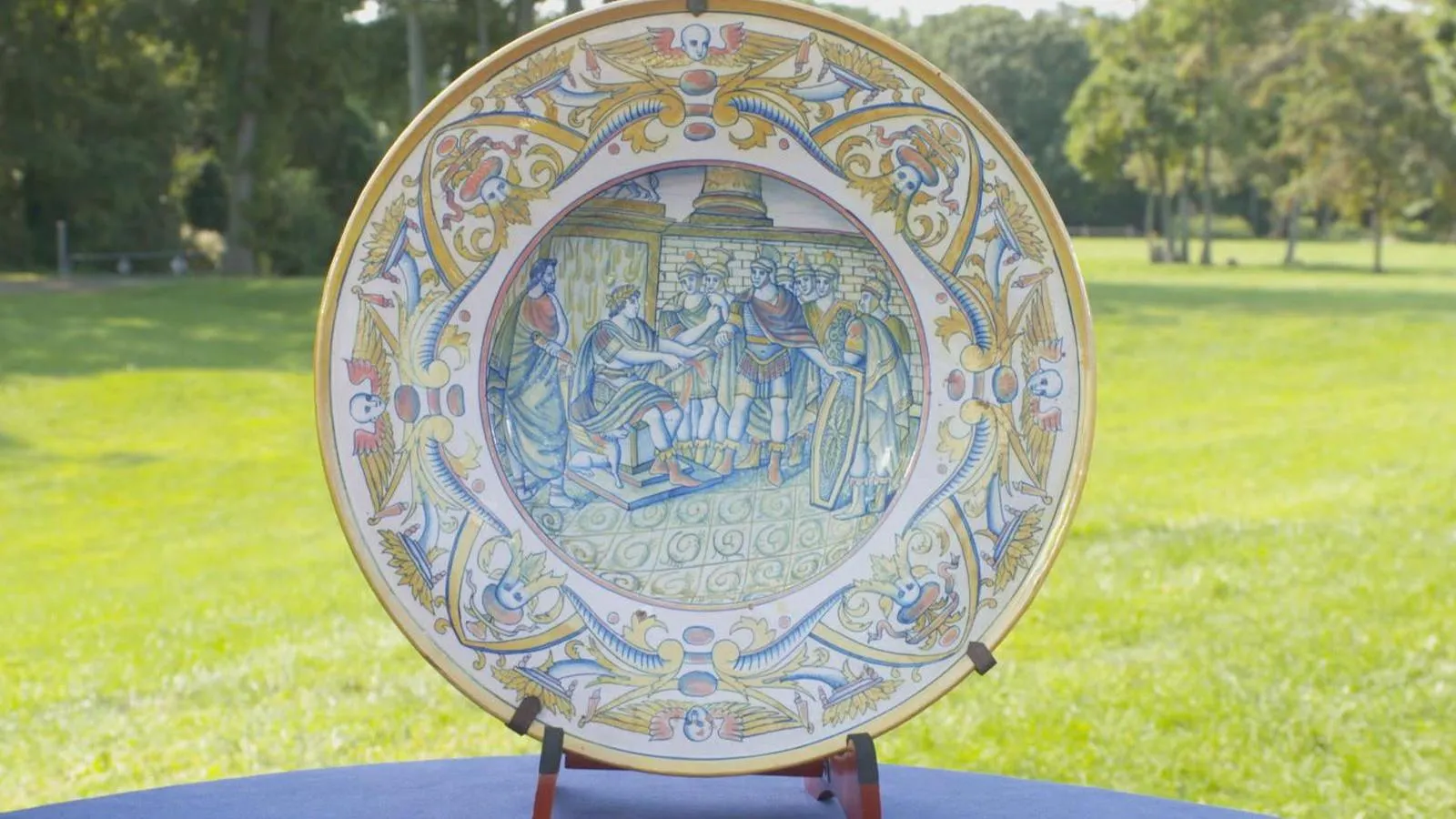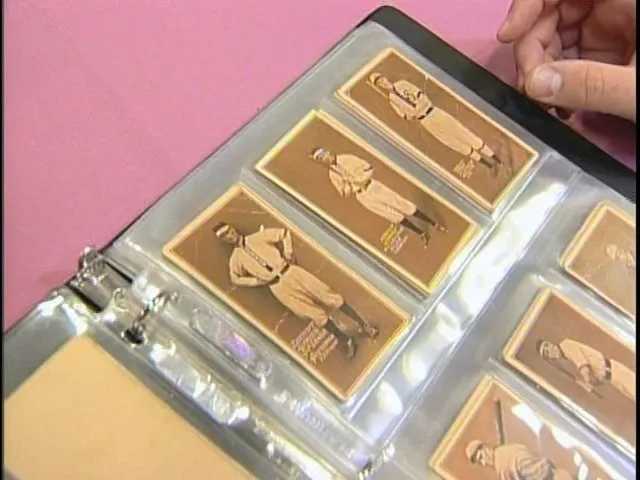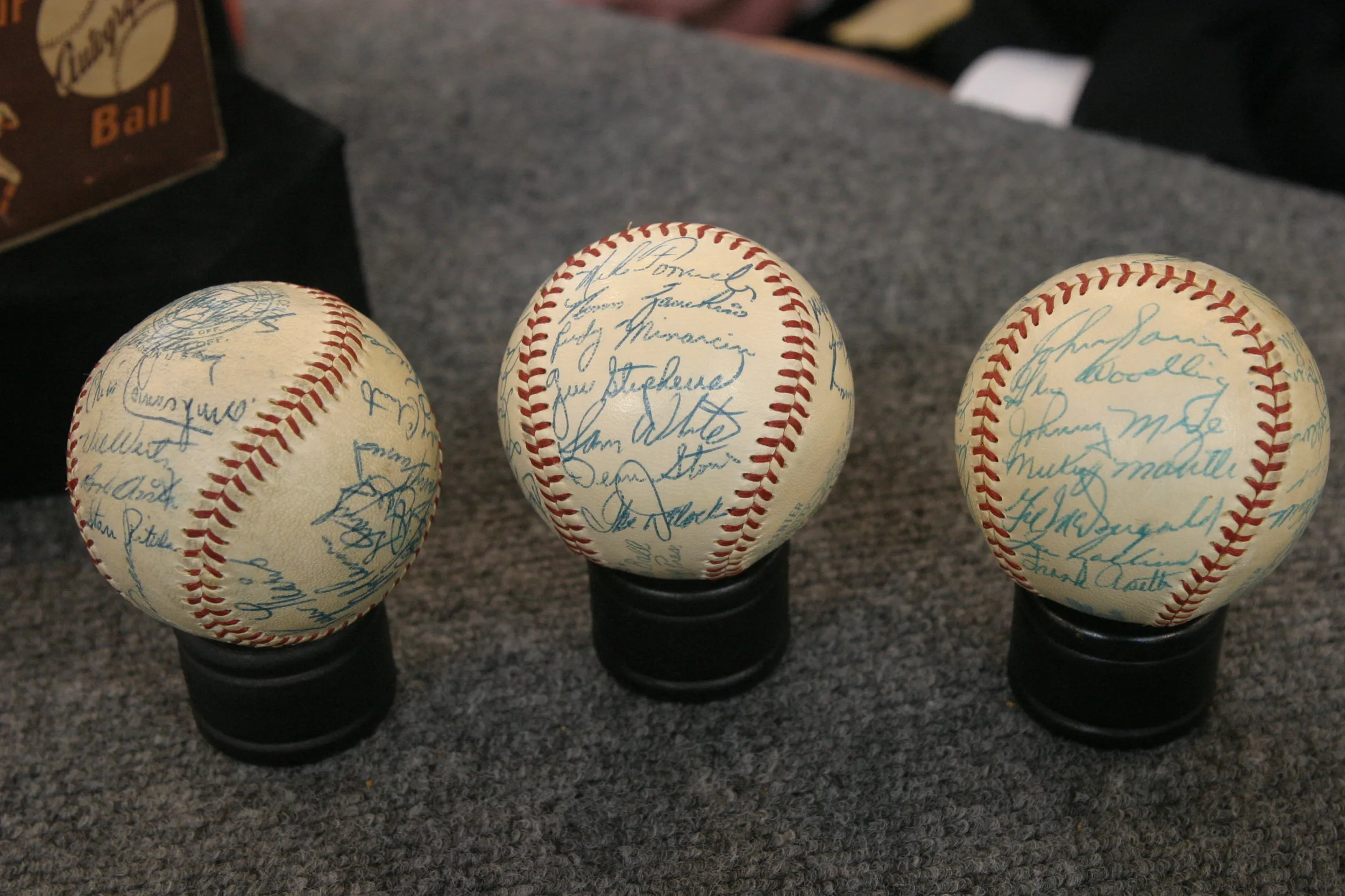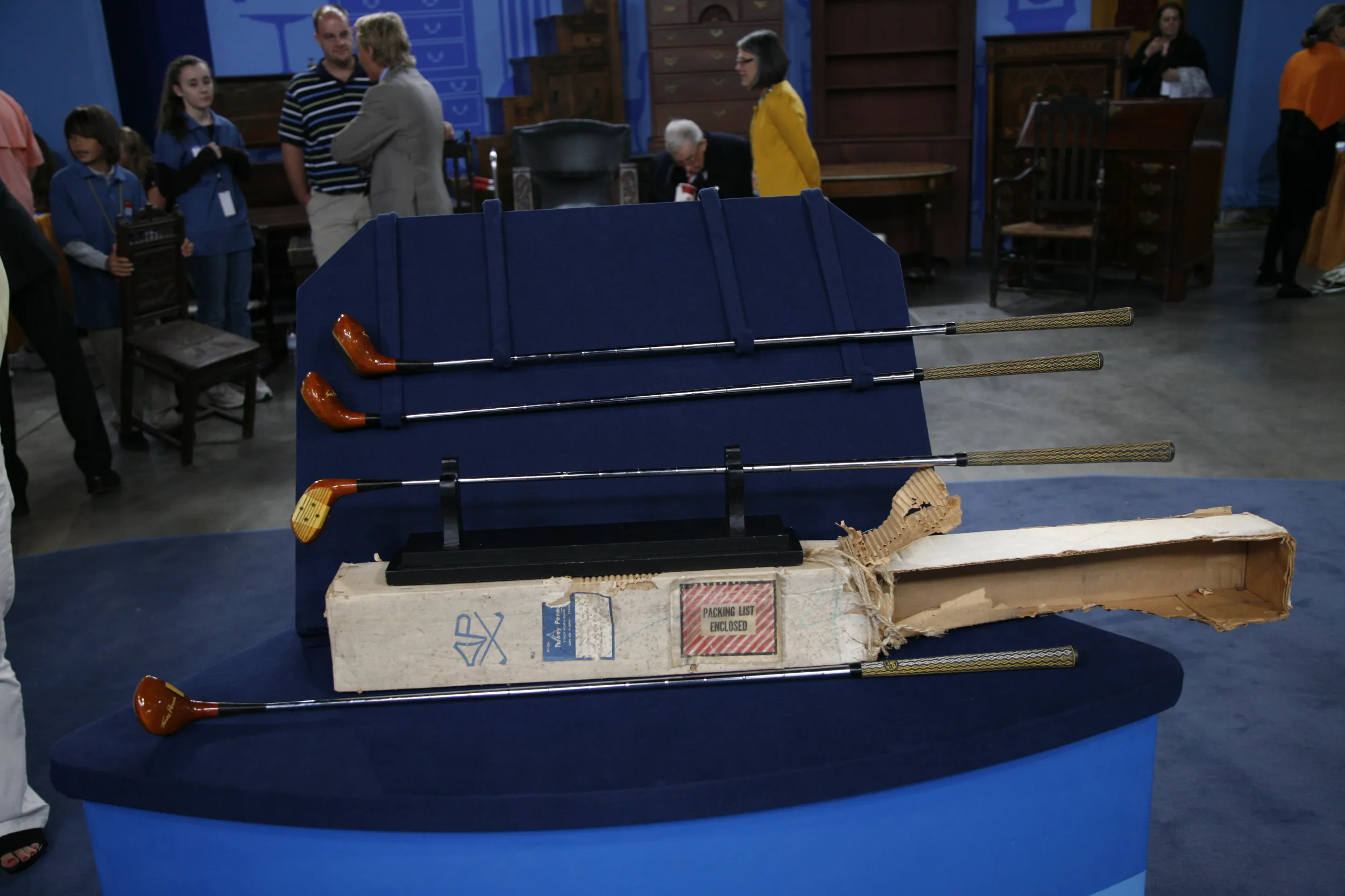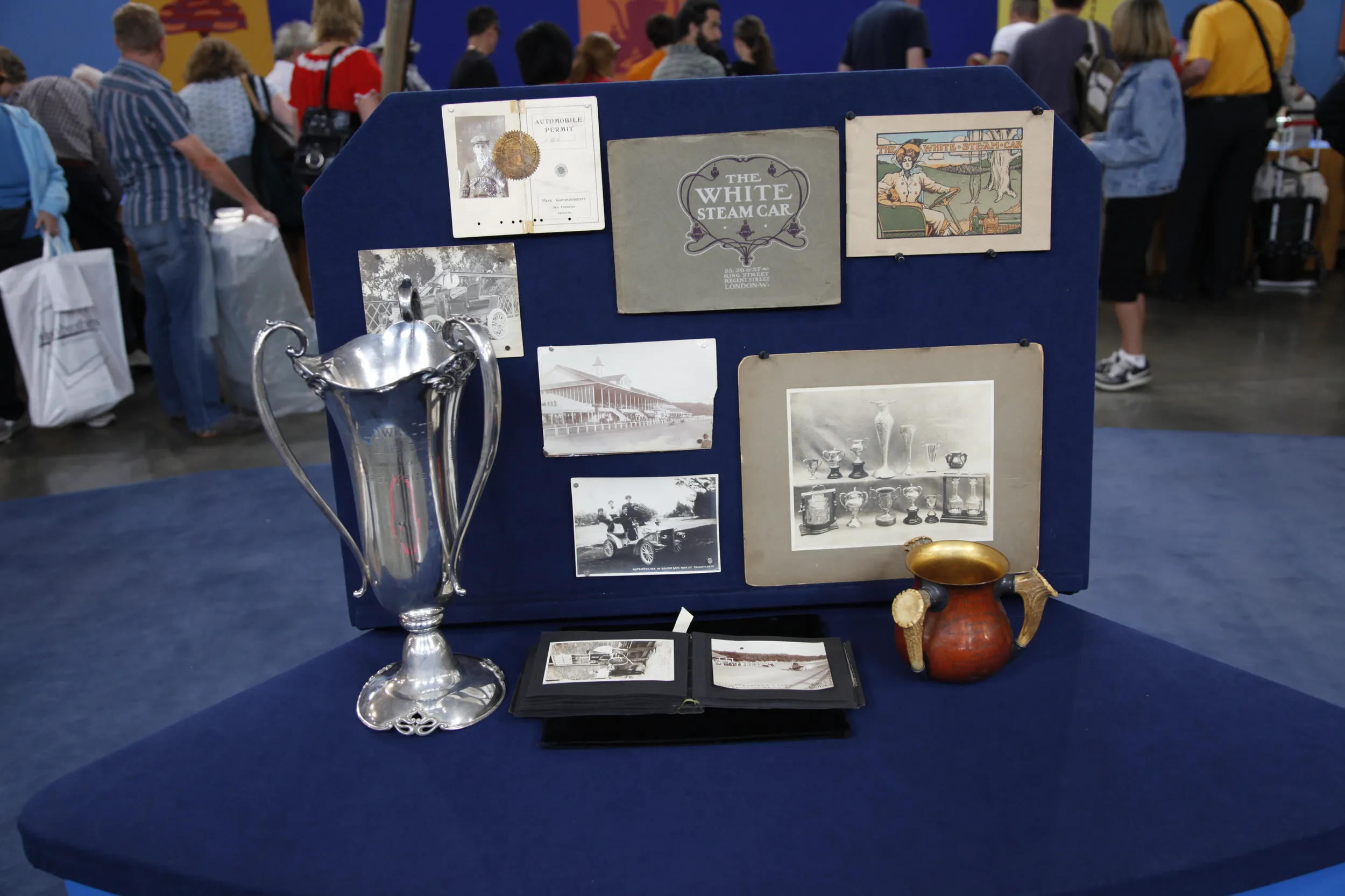GUEST: So a six-foot Louisville Slugger. I picked it up in Think Big in Manhattan in the early '80s, so I've been collecting Hall of Fame autographs and putting them on there as I went. I always brought my children with me, my three boys, and it was a great time. So, you know, a lot of family memories.
APPRAISER: And how many signatures are on your bat?
GUEST: 80 signatures, 78 are Hall-of-Famers now. Two of them I had put on there, Pete Rose and Tommy John, thinking that they'd, you know, by now they'd be Hall-of-Famers.
APPRAISER: Yeah.
GUEST: You know, about 30 years later, still not, but I still think they will be eventually. Sometimes I had to choose guys to put on there if I met them before the, you know...
APPRAISER: Yeah.
GUEST: ...they even got into the Hall of Fame.
APPRAISER: Mm-hmm.
GUEST: Just to take a chance.
APPRAISER: What did people say when they saw you hauling around this big bat?
GUEST: Well, it did stick out.
APPRAISER: Yeah.
GUEST: It did stick out, when I walked around with it, showing it, they said, "Oh, you think you can hit with that bat? You think you can?" And then at one time, some of the players stopped signing bats. So my last big name I had to get was Ted Williams. I drove up to Albany with my three boys, and as I'm going up there, they're saying, "You know, he's not gonna sign that. It's a bat, it's a bat." And I got to the last spot, we're just before him, and Ted Williams looks at it, he says, "I'll sign that for him." He was very nice.
APPRAISER: What I appreciate about it so much is that you said you got them all one at a time. As far as authenticity, and we talk about provenance and authenticity all the time...
GUEST: Right.
APPRAISER: ...not only were you personally witnessing the signatures...
GUEST: Oh, yeah.
APPRAISER: ...but then you also took photographs like you brought and shared with us today.
GUEST: Oh, I got photographs for pretty much every one, every one of the players at some point...
APPRAISER: Signing it.
GUEST: You know, signing it.
APPRAISER: And here's the photo of Willie Mays. Right.
GUEST: My son and me. (chuckles)
APPRAISER: And then, and then here's the signature of Willie Mays right here. And what's also interesting that I love about this particular photo is, look how few signatures are on the bat at this time.
GUEST: That was early.
APPRAISER: I don't see any others on there.
GUEST: I forget who the first one, it might've been Joe, Joe DiMaggio.
APPRAISER: Here's Joe DiMaggio right there.
GUEST: Right.
APPRAISER: Well, I certainly have seen bats that are the 500 home run club.
GUEST: Right.
APPRAISER: Seen some Hall of Fame bats, but probably just because the sheer size of the bat, as well...
GUEST: (chuckles) Right.
APPRAISER: ...I don't think I've seen 78 Hall of Fame signatures on a bat that displays as well as this.
GUEST: Right.
APPRAISER: Yeah, this is autograph success here. Just your dedication and passion to making this happen.
GUEST: (chuckles)
APPRAISER: What's really unique about it is the fact that you did put this together starting with a blank bat.
GUEST: Right, right, yes, yes.
APPRAISER: And to me, that's just one of the biggest appeals of it. Of course, the prices, the signing costs probably varied.
GUEST: A lot of them, like, like, I was able to get for free, and, at certain events...
APPRAISER: At, uh, certain events.
GUEST: In those, when I started doing it, you know, these guys were charging, like, ten dollars. You know, maybe $500 in auto, in autograph costs.
APPRAISER: In, yeah. At auction, I'd expect it to sell for at least $4,000 to 6,000.
GUEST: Okay. Okay. Very nice.
APPRAISER: A multi-signed piece like this doesn't always translate to what you would think as far as when you look at the...
GUEST: The value.
APPRAISER: ...the value of their autographs.

